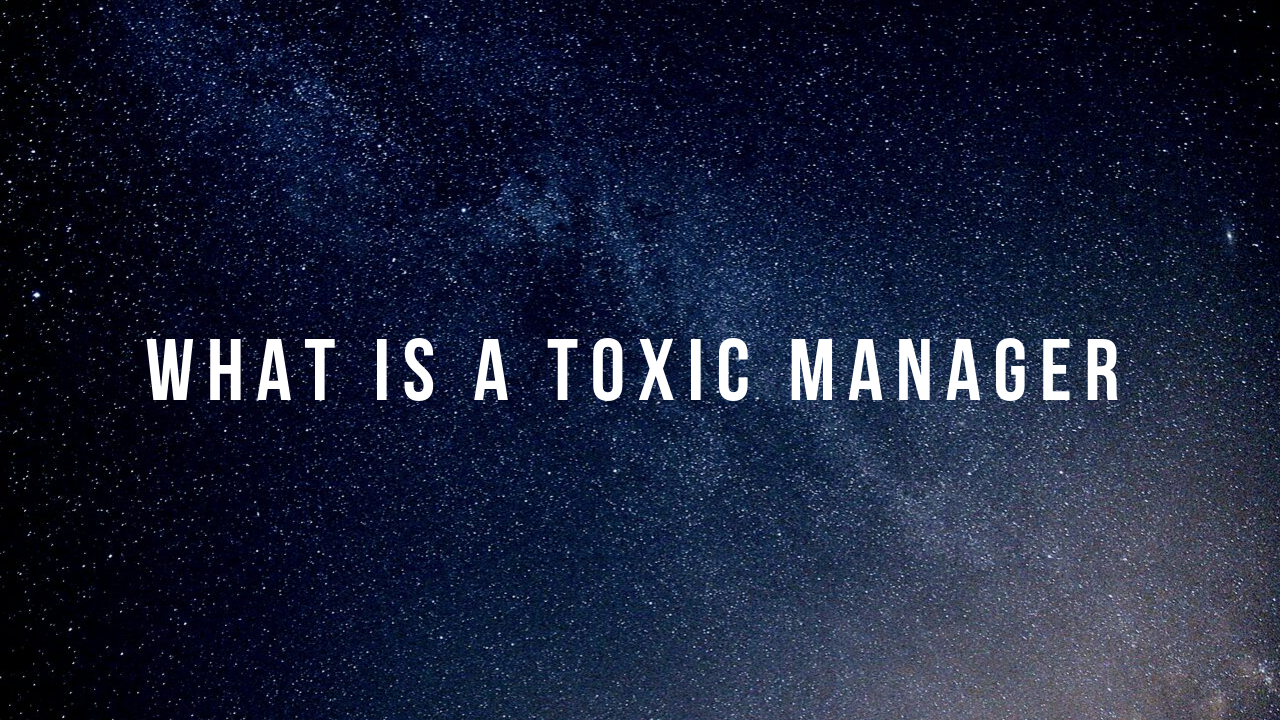|

Most managers are uncomfortable with a simple truism that the current condition of any organization is direct reflection of leadership. In other words, managers are accountable for the current success or failure of the team. This epiphany is a rude awakening for some and a sad reality for others. The challenge faced by most aspiring leaders is the brutal accountability that accompanies autonomy. In other words, team performance is directly related to “who”
is on the team and “how” they are managed. The wrong people certainly influence performance and this quantification of talent is the primary measure of success and failure. However, the most neglected performance indicator is the environment created by the manager for the team. A toxic environment created by a poor manager can have a dramatic impact on organizational performance. The healthiest of plants cannot thrive in a low quality soil. Toxic
managers poison the environment and limit the success of talented individuals on any team. Can we actually poison the productivity of those we are given the opportunity to manage? How much influence does the manager have on team performance? Most people do not realize that sales, productivity, morale, safety, quality or any other measure of team performance are directly impacted by the environment within the organization. Moreover, it is very difficult for any aspiring
leader to admit they are the cause of the problems facing the team. It is difficultforasubordinate to tell the boss that they are the problem. If the environment becomes toxic to employees, those with the power to provide a remedy are in denial that “they” are the cause and no one is willing to let them know. This condition can remain and even worsen greatly over time. Tragically, the entire team can become institutionalized to accept the toxic environment as normal. What are toxins in the workplace that seem to have the most impact on
the typical organization? What can a good leader do to neutralize the toxin in the workplace? As you might expect, some cures are very simple while others can be complex. Toxicity requires removal of certain individuals while in other cases, it requires treatment. Removing an individual has been overly complicated by our litigious society and the reluctance of many human resources functions tostepupwhen it comes to talent management. We are often paralyzed by the fear of litigation to the point that we settle for a horrible environment that is toxic for everyone on the team. Too many executives either do not understand that risk is commensurate with return or they are afraid to make the tough decision. This inaction will eventually erode whatever leadership equity the executive had to the point that he or she is no longer leading the organization. Every single
day we tolerate a toxic individual at any level results in an organization that no longer believes performance and attitude are valued. The rule of thumb to remember is “if you think you need to make a people change…you probably do”. Treatment for toxicity is a bit more complicated as it required a process rather than an event. Focused coaching and training can help a toxic manager that may be managing without the capability (skills and talent). Keep in
mind that training is not a one-size-fits-all solution. Generic management training can be too superficial to produce any real change for a smart, yet struggling manager. These managers have readthebooksand been to the seminars and still do not realize that “they” are the toxin. With proper preparation, a skilled business coach can break through the surface crust and begin the process of ongoing enlightenment. Just remember that change is a process and individuals may or may not adopt the change at the same speed. For some it may require months and for others it could be longer. The toxic manager may also be aware of their toxicity, yet they believe
their past achievement and reputation are a justification for the methods they employ. This denial is very common for experienced managers that have never been confronted about leadership over management. In other words, a marginally successful manager may be an incompetent leader. Settling for mediocrity is more common than we like to admit. Organizations fear factors that eventually paralyzethemtoremove a toxic manager. Market availability of talent, location, salary and other factors result in organizations settling for the “devil they know” rather than the one they might hire. According to Gallup there are twelve questions to determine toxicity in an organization. These questions may seem very simple, yet getting to a compelling answer is very complex.
- First, ...
Click To Finish Reading

Leading the Tribes Video
Leading the Tribes Training - Book my 1-day class at your location for managers and supervisors.
Leading the Tribes Keynote Speech - Book my 1-hour speech for your event.
Call (903) 295-7400 Today!
-------------------------------
Keeping Top Talent Video

-----------------------------

Need a Keynote Speaker?

I'm always amazed at how fun you can make learning!
Tessa Conrad, Pak-Sher
Your excitement and energy as a speaker is amazing. Hearing you speak on your years of experience and insights on leadership and generational change was very relevant and something that we can all learn from and apply to our organizations.
Cliff McDaniel, Louisiana CPA Oil and Gas Conference
It was the best presentation that I have attended so far, You are the best speaker ever . I am so impressed that I have ordered 2 of your books on Amazon. So thank you for making a difference in people’s personal and professional lives.
Lovely Chandla, Hilton
John Grubbs' keynote message is powerful! John is able to clearly convey his knowledge and foresight on the generational changes that affect ALL of us. I had many A-ha moments with his vivid examples. We continue to talk about what his message taught us to this day. You will have to reach for a tissue to wipe tears of emotion and laughter. John's message is memorable and inspirational!
Maria Gallegos, Texas Chemical Council
Call John Grubbs (903) 295-7400


|






